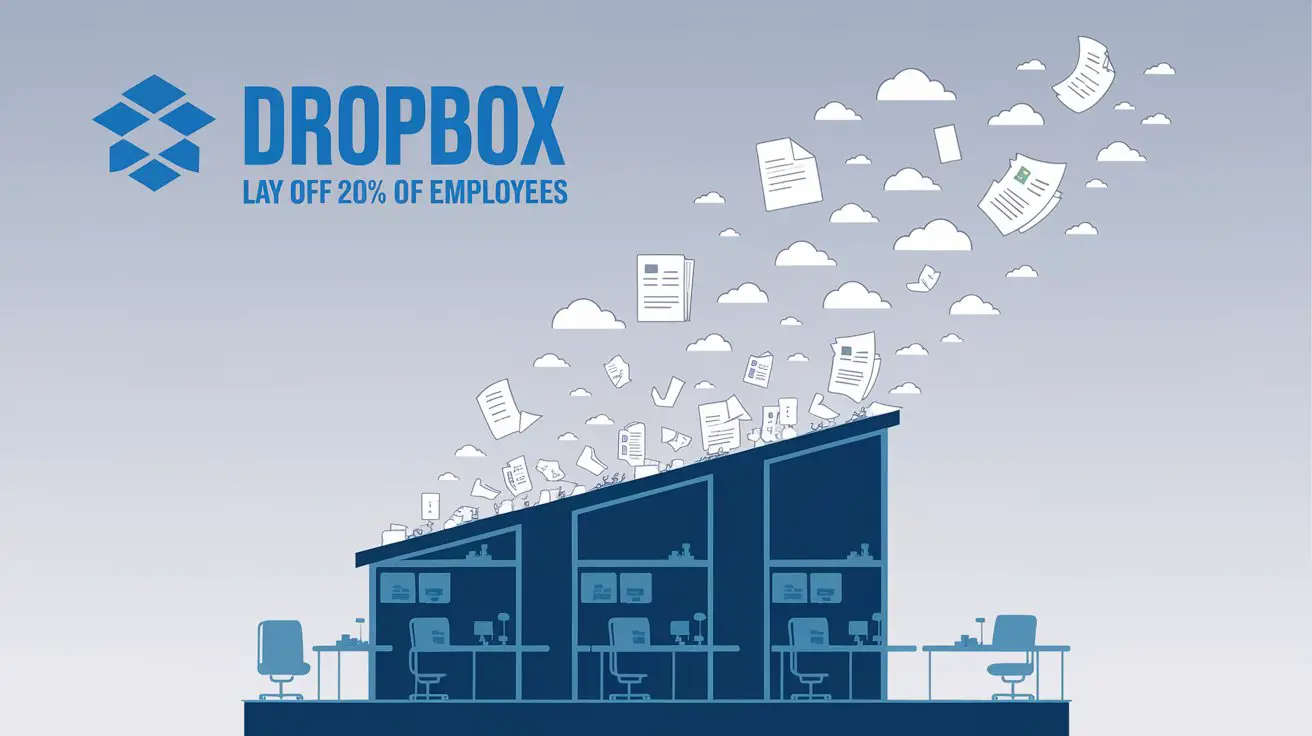Dropbox recently announced a significant reduction in its workforce, with plans to lay off approximately 20% of its global employees. This decision, impacting hundreds of roles, is part of a broader restructuring strategy aimed at adapting to the changing demands of the technology industry. While Dropbox remains a prominent player in cloud storage and collaborative tools, the company has faced mounting pressure to streamline its operations and refocus its resources to remain competitive in a rapidly evolving market.
This strategic shift comes amid broader industry changes, as many tech companies look to refocus and right-size in response to a shifting economic climate, increased competition, and the need to innovate more quickly. Here’s a closer look at the reasons behind Dropbox’s decision, what the company aims to achieve, and how it reflects the current state of the tech industry.
The Rationale Behind the Layoffs
Dropbox’s CEO, Drew Houston, has been vocal about the need for the company to adapt its business model. He cited changes in the market landscape, evolving customer needs, and the increasing importance of AI technology as key factors influencing the restructuring. Over the years, Dropbox has expanded from a cloud storage solution to a comprehensive workspace collaboration tool. However, as remote work surged, so did competition, with new players and established giants alike entering the collaborative software space.
According to Houston, these layoffs are part of a longer-term vision to reshape Dropbox’s focus and resource allocation. He emphasized the importance of pivoting toward AI-driven features and tools, which the company believes will play a central role in its future product offerings. This pivot requires substantial investment in new technology and specialized talent, hence the restructuring and reallocation of resources from other areas.
Dropbox’s Shift Toward AI and Automation
Dropbox’s decision to increase its focus on AI is reflective of a broader trend across the tech sector. With AI becoming a transformative force in numerous industries, many companies are exploring how it can enhance productivity, streamline processes, and offer new capabilities to customers. For Dropbox, this means embedding AI into its suite of products to help users manage their digital files more effectively and automate routine tasks.
This AI-driven strategy is intended to make Dropbox’s offerings more relevant in an environment where companies and individuals are handling vast amounts of digital data daily. AI-powered tools, such as automated document organization, file search, and real-time content insights, could transform Dropbox’s platform into a smarter, more efficient workspace solution.
Dropbox’s focus on AI also represents an opportunity to differentiate itself in a crowded market. Cloud storage and collaboration have become widely accessible, so innovating with AI-enhanced capabilities could make Dropbox’s tools indispensable to businesses looking to optimize productivity and data management.
Impact on Employees and Company Culture
The decision to lay off a significant portion of its workforce has undoubtedly created uncertainty among Dropbox employees. In recent years, Dropbox has been recognized for its positive work culture, often ranked as one of the better companies for work-life balance in the tech sector. These layoffs, however, highlight the challenges that even well-established tech companies face as they navigate an increasingly competitive landscape.
Affected employees will receive severance packages, career support, and assistance transitioning to new opportunities. However, layoffs on this scale can impact overall morale and raise questions about Dropbox’s future direction. In the memo announcing the layoffs, Houston acknowledged the difficulty of the decision and expressed gratitude for the contributions of all impacted employees.
Broader Trends in the Tech Industry
Dropbox is not alone in reducing its workforce and recalibrating its focus. The tech industry, once known for its rapid growth and expansion, has seen a significant wave of layoffs and restructuring as companies contend with economic pressures, evolving customer demands, and increasing competition. Prominent tech firms, from Google and Amazon to smaller startups, have announced similar workforce reductions in recent years as they seek to maintain financial stability and allocate resources to high-priority initiatives.
This trend underscores a growing emphasis on operational efficiency and profitability. As the industry matures, companies are moving away from a focus solely on growth and are instead prioritizing sustainable, strategic expansion. For many, this means focusing on core competencies, exploring new revenue streams, and investing in emerging technologies like AI that promise long-term benefits.
The Path Forward for Dropbox
For Dropbox, this restructuring marks a new chapter in its journey. The company, once a pioneer in cloud storage, now faces the task of reinventing itself in a world where cloud storage has become ubiquitous. Dropbox aims to move beyond being a storage service to becoming an essential productivity tool powered by intelligent features. This vision aligns with the company’s broader mission of making work easier and more efficient for users, particularly in a hybrid work environment.
Investors and analysts will likely watch closely to see how Dropbox implements its AI vision and whether the shift will lead to growth and profitability. The success of this strategy will depend on Dropbox’s ability to deliver AI-enhanced products that resonate with users and meet the demands of an evolving workplace. If successful, Dropbox could carve out a unique niche in the productivity software market, positioning itself as a leading provider of intelligent collaboration solutions.
In summary, Dropbox’s decision to lay off 20% of its staff as part of a strategic restructuring plan reflects the shifting priorities of the tech industry as a whole. By refocusing on AI and reallocating resources, Dropbox aims to adapt to a competitive landscape and secure its place as a leading productivity platform. However, only time will tell whether this approach will pay off and enable Dropbox to thrive in the face of growing industry challenges.





